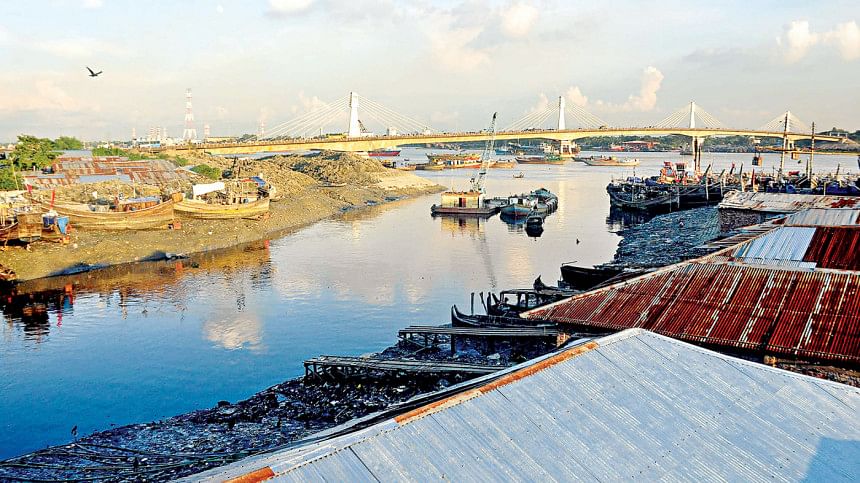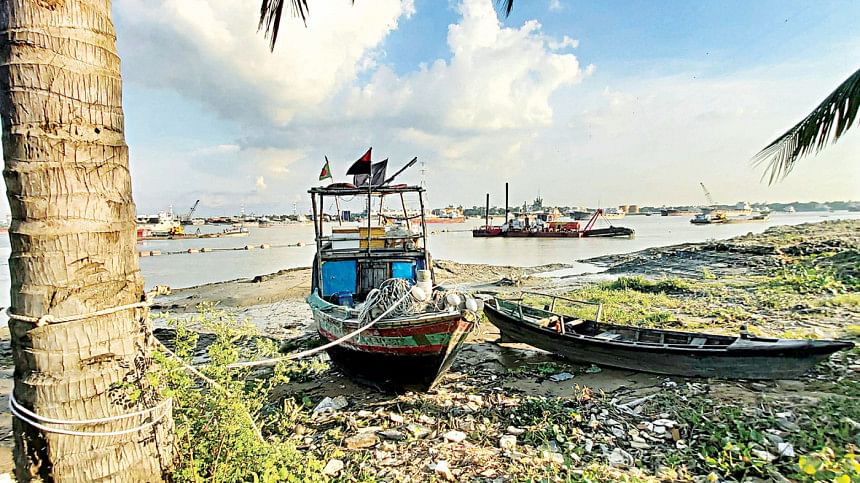Pollution killing Karnaphuli plants

As many as 81 species of plants on Karnaphuli riverbanks are in danger of going extinct over the next few decades due to the dumping of industrial wastes and other forms of pollution.
Another 61 species of plants will become endangered if no action is taken to prevent pollution, revealed a study titled "Floristic status and impacts of anthropological activities towards degradation of the Karnaphuli river and surrounding areas".
Mohammad Omar Farooq Russel, associate professor of Department of Botany at Chittagong University, and his team presented their research findings at a seminar at Chattogram Press Club recently.
The study was carried out in collaboration with port city-based environmental organisation Effective Creation on Human Opinion (ECHO).
The researchers conducted a field survey from January to August to identify the species of riverside plants and sources of pollution.
According to the study, the river is being polluted from 89 sources, which includes 53 industries.
The study found that there are 528 species of plants on the Karnaphuli riverbank. Of them, 144 are large trees, 69 shrubs, 58 vines, 244 ferns and 13 parasitic plants.

According to a DoE report, 35 out of 140 species of fish can no longer be found there because of pollution.
The research team also found the movement of dolphins at 64 places in Karnaphuli river, which is also being disrupted due to unabated pollution.
Omar Farooq said, "Waste is being dumped directly into the river from seven industrial factories situated on both banks. We have collected waste samples and analysed them in our labs, following which we found the presence of toxic chemicals."
Besides, more than 22,000 tonnes of wastes are being generated at Chattogram every day, most of which flow into Karnaphuli river through different canals and drains due to poor drainage system.
Also, over 4,000 ships and 10,000 registered and unregistered vessels ply the river every month, contributing to the river pollution by emitting harmful gas and dumping wastes.
Dr Idrish Ali, professor of chemistry department of Govt Haji Mohammad Mohsin College, said, "To save the 528 recognised plant species, there's no alternatives to stopping pollution."
The Department of Environment (DoE) in Chattogram has also conducted several surveys on the Karnaphuli recently.
According to a DoE report, 35 out of 140 species of fish can no longer be found there because of pollution.
Mofidul Alam, director of DoE, Chattogram, said, "We have instructed industries operating by the Karnaphuli to set up Effluent Treatment Plants for waste management."
Just like the Buriganga in Dhaka, encroachment of the river goes hand in hand with the pollution level in the Karnaphuli.
Chattogram District Administration made a list of 2,112 grabbers along a 40km stretch of the river from Kalurghat to Patenga, following a 2010 HC order.
Since 2016, the court has issued several directives at different times ordering the district administration, Chattogram Port Authority (CPA) and Chattogram Development Authority (CDA) to remove illegal structures from the riverbanks.
Till date, none of the authorities have fully complied with the court orders.

 For all latest news, follow The Daily Star's Google News channel.
For all latest news, follow The Daily Star's Google News channel. 



Comments